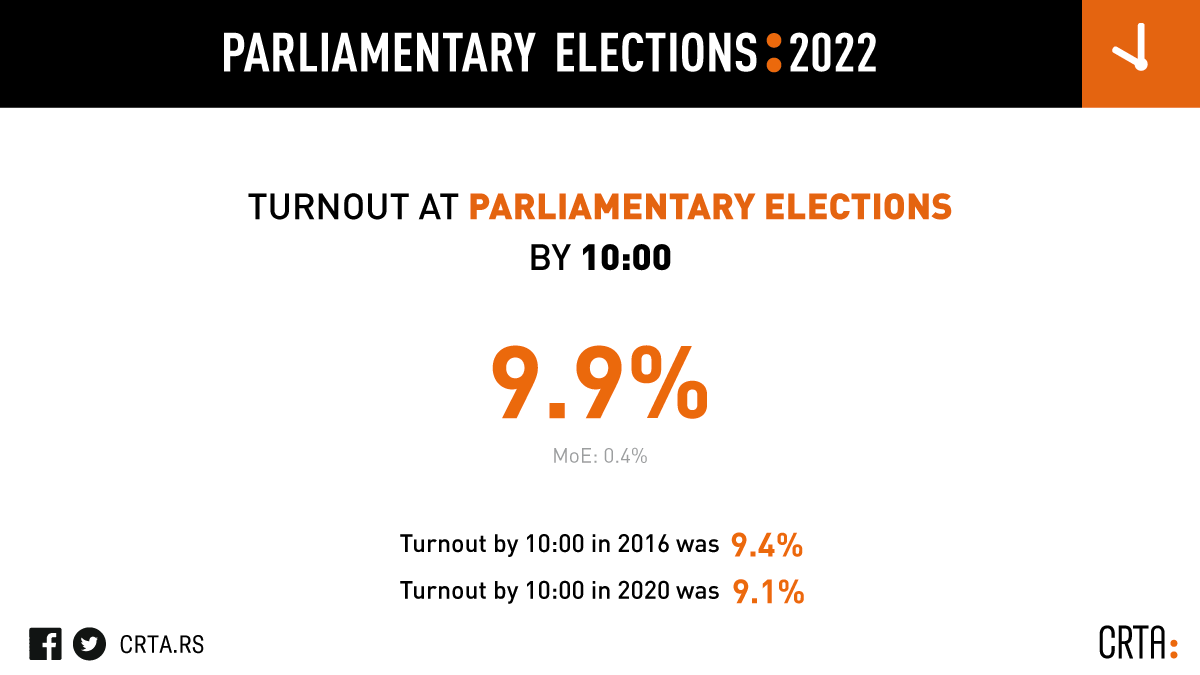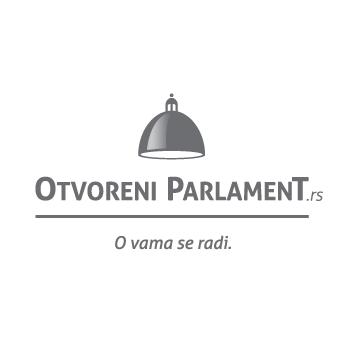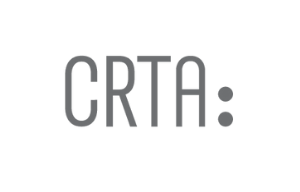A total of 9,9 percent of voters voted in parliamentary elections by 10:00

A total of 9,9 percent of voters registered in the Voters’ List voted in parliamentary elections by 10:00 (margin of error 0,4).
In comparison, voter turnout by 10:00 in the 2016 parliamentary elections was 9,4 percent, and 9,1 percent in the 2020 parliamentary elections.
On the territory of Belgrade, voter turnout in parliamentary elections is slightly lower than in the rest of Serbia, amounting to 8,4 percent (margin of error 0,2).
A total of 6.502.307 citizens registered in the Voters’ List have the right to vote in republic elections.
Nearly 10 percent of polling stations in Serbia and in Belgrade were opened with a delay.
Observers report that 4 percent of polling stations were not prepared in accordance with established procedures, including 2 percent in Belgrade.
All members of polling boards were not present at polls during the opening at a significant number of polling stations in Serbia (17 percent), 19 percent in Belgrade.
All activities of polling boards were not recorded in the Polling Board Records at 9 percent of polling stations.
Bags with election material were not secured with the seal at 2 percent of polling stations, both in Serbia and in Belgrade, while ballot boxes were not sealed, control ballots were not presented to the first voter or cast into the ballot box at 3 percent of polls in Serbia and 2 percent of polls in Belgrade.
CRTA’s observers recorded two cases of “carousel voting” that the CRTA’s election observation mission will report to the police. In addition, so-called collective voting was recorded at one polling station in Belgrade.
CRTA’s observers were prevented from monitoring the start of the voting process at 32 percent of polling stations, however, after the intervention of the Republic Electoral Commission, they were allowed to continue observation. Members of polling boards at 8 percent of polling stations do not adequately provide information about the voting process to CRTA’s observers.
While polling stations in Kursumlija, Tutin, Bujanovac and Raska, designated for voters from Kosovo and Metohija, are not included in the CRTA’s sample for Serbia, CRTA’s observers collect the information at these polls. The large crowds were recorded at these polling stations, endangering the secrecy of voting due to inadequate voting conditions.
CRTA’s election observation mission has more than 3.000 observers, trained in accordance with the highest international standards, which is twice more than in the 2020 elections.
CRTA reports about republic (presidential and parliamentary) and Belgrade elections, on the basis of two random samples, representative for Serbia (500 polling stations) and Belgrade (450 polling stations), totaling a number of 950 polling stations.
CRTA does not observe the voting process at polling stations abroad, nor in correctional facilities.
The next conference of the CRTA’s election observation mission, scheduled for 16:30, can be followed live at the CRTA’s Facebook page or YouTube channel.








